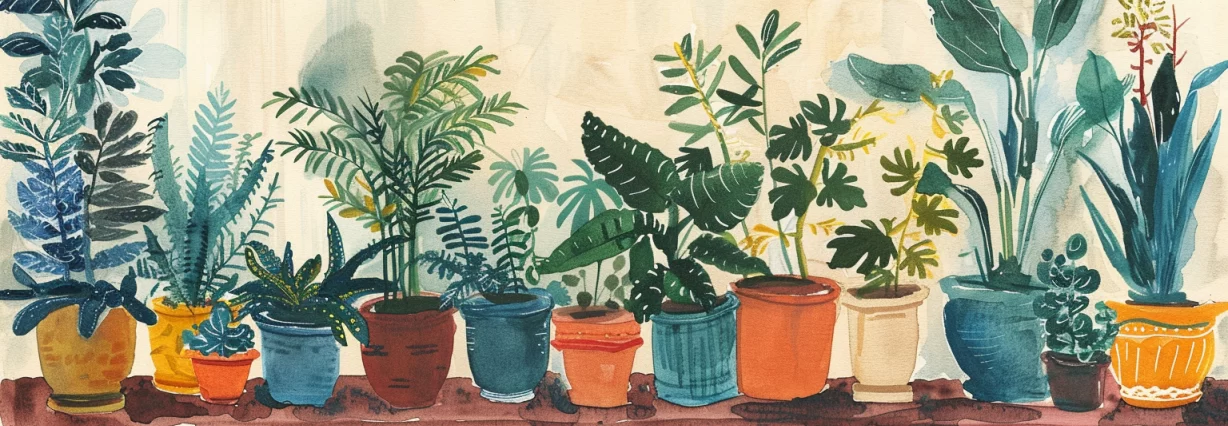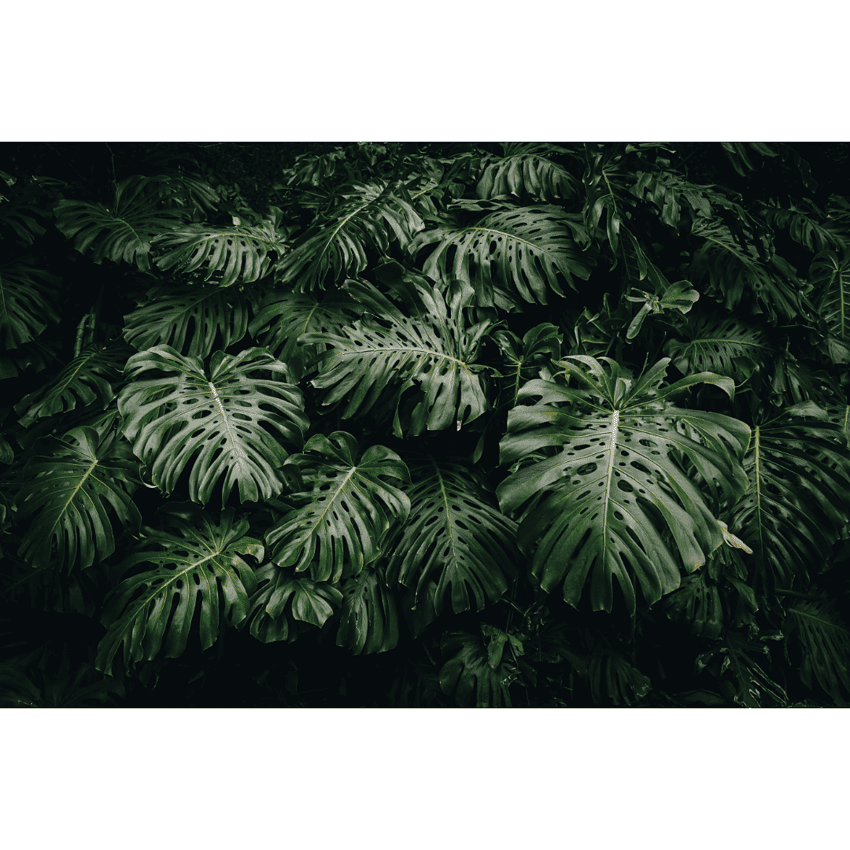Monstera pinnatipartita is a unique and stunning plant that has been gaining popularity in recent years. This evergreen climbing plant is native to tropical forests in Colombia, Peru, and Ecuador, where it grows as an epiphyte. While it can sprout and root in soil, its aerial roots eventually attach to other plants, making it a climbing plant.
One of the most striking features of the Monstera pinnatipartita is its unusual fenestrations, or holes, in its leaves. As the plant matures, it develops deep and unusual fenestrations that add to its beauty and uniqueness. Another notable feature of this plant is its bi-colored leaves, which are dark green on top and light green underneath.
Growing and caring for the Monstera pinnatipartita can be a rewarding experience for plant enthusiasts. However, it is important to note that this plant requires specific growing conditions to thrive. Understanding the plant’s needs, such as proper watering and sunlight, is crucial to its growth and overall health.
Overview
Monstera pinnatipartita is a unique plant that belongs to the Monstera genus and is native to tropical forests in Ecuador, Colombia, and Peru. This plant is commonly known as the Swiss Cheese Plant due to its leaves’ unique fenestrations, which develop as the plant matures. The plant is a popular choice for indoor gardening due to its unique appearance and air-purifying qualities.
Description
Monstera pinnatipartita is a climbing plant that can grow up to 2 feet a year if indoor growing conditions are optimal. The plant has aerial roots that allow it to climb and attach to other plants, walls, or trellises. The plant’s leaves are bi-colored and have deep and unusual fenestrations that add to its unique appearance.
Species
Monstera pinnatipartita belongs to the Monstera genus, which includes other popular indoor plants like Split Leaf Philodendron. The plant is a member of the Araceae family, which encompasses several genera, including notable plant species like Swiss Cheese Plant and several other plants.
Growth Habit
Monstera pinnatipartita is a tropical plant that generally thrives in warm temperatures. The plant prefers indirect light or indirect sunlight and requires high humidity levels to grow and thrive. The plant’s soil should be kept moist, but overwatering can lead to root rot. The plant can become leggy if it does not receive adequate light, and juvenile plants have smaller and less fenestrated leaves than mature plants.
Air Purification
Monstera pinnatipartita is an excellent air purifier and can help remove harmful toxins like formaldehyde and benzene from the air. The plant’s broad leaves can also help increase humidity levels in indoor spaces, making it an ideal choice for people who live in dry climates. To maximize the plant’s air-purifying qualities, it is recommended to keep the plant in a well-ventilated area and use a moisture meter or humidifier to maintain optimal humidity levels. Misting the plant’s leaves can also help increase humidity levels in dry environments.
In summary, Monstera pinnatipartita is a unique and popular indoor plant that belongs to the Monstera genus. The plant has a climbing growth habit and requires indirect light, high humidity, and moist soil to grow and thrive. The plant’s unique appearance and air-purifying qualities make it an excellent choice for indoor gardening.
Care
Taking care of your Monstera Pinnatipartita is essential to ensure that it grows healthy and strong. Here are some tips on how to properly care for your plant.
Watering
Monstera Pinnatipartita plants require consistent moisture in their soil, but be careful not to overwater them. Before watering, make sure the top inch of soil is dry. Use room temperature water and avoid getting water on the leaves. Ensure your pot has proper drainage holes to prevent waterlogging.
Sunlight
Monstera Pinnatipartita plants prefer bright but indirect light, so place them near a window with filtered light. Direct sunlight can scorch the leaves and cause discoloration. In low light conditions, the plant may become leggy and lose its characteristic fenestration.
Temperature
Monstera Pinnatipartita plants thrive in temperatures between 65°F to 85°F. Avoid exposing them to cold drafts or extreme heat, which can damage the leaves.
Humidity
High humidity levels are crucial for Monstera Pinnatipartita plants, as they are native to tropical regions. Mist the leaves regularly or use a humidifier to maintain a humidity level of at least 60%.
Soil and Potting
Monstera Pinnatipartita plants prefer well-draining soil with a mix of organic matter, perlite, coco coir, and orchid bark. Repot your plant every two years or when it outgrows its pot.
Fertilizer
Feed your Monstera Pinnatipartita plant with a balanced liquid fertilizer every two weeks during the growing season. Alternatively, use organic matter such as compost or worm castings to fertilize your plant.
Pruning
Prune your Monstera Pinnatipartita plant to control its size and shape. Remove yellowing or drooping leaves, and use a stake or support to help it grow upright. Regular pruning can also encourage new growth and fenestration.
By following these care tips, your Monstera Pinnatipartita plant will thrive and add a touch of tropical beauty to your home.
Propagation
Monstera Pinnatipartita can be propagated through several methods, including water propagation, cutting, division, air layering, offsets, and seeds. Each method has its own advantages and disadvantages, and the success of propagation depends on various factors, including the plant’s age, health, and growing conditions.
Water Propagation
Water propagation is a popular method for propagating Monstera Pinnatipartita, especially for beginners. To propagate using this method, follow these steps:
- Cut a healthy stem from the parent plant, making sure it has at least one node.
- Remove any leaves or branches from the bottom of the stem.
- Place the stem in a jar or vase filled with water, making sure the node is submerged.
- Change the water every few days to prevent bacteria growth.
- Wait for roots to grow, then transplant the cutting into soil.
Cutting
Cutting is another common method for propagating Monstera Pinnatipartita. To propagate using this method, follow these steps:
- Cut a healthy stem from the parent plant, making sure it has at least one node.
- Dip the cut end of the stem into rooting hormone to encourage root development.
- Plant the stem in a pot filled with well-draining soil.
- Water the soil regularly and keep it moist until roots grow.
Propagating through Division
Propagation through division involves separating the parent plant into smaller sections and planting them separately. To propagate using this method, follow these steps:
- Remove the parent plant from its pot and gently separate the roots into smaller sections.
- Plant each section in a pot filled with well-draining soil.
- Water the soil regularly and keep it moist until roots grow.
Air Layering
Air layering is a more advanced method for propagating Monstera Pinnatipartita. To propagate using this method, follow these steps:
- Choose a healthy stem on the parent plant and make a small cut in the bark.
- Wrap the cut area with moist sphagnum moss and cover it with plastic wrap.
- Wait for roots to grow, then cut the stem below the root ball and plant it in soil.
Offsets
Offsets are small plants that grow from the parent plant’s base. To propagate using this method, follow these steps:
- Remove the offset from the parent plant, making sure it has some roots.
- Plant the offset in a pot filled with well-draining soil.
- Water the soil regularly and keep it moist until the plant is established.
Seeds
Propagation through seeds is possible, but it is not a common method for Monstera Pinnatipartita. To propagate using this method, follow these steps:
- Collect seeds from a mature plant and plant them in a pot filled with well-draining soil.
- Keep the soil moist and warm, and wait for the seeds to germinate.
- Transplant the seedlings into individual pots when they are large enough.
Propagation is a great way to grow your Monstera Pinnatipartita collection or share your love of this beautiful plant with friends and family. With the right conditions and techniques, you can successfully propagate your Monstera Pinnatipartita and enjoy its lush foliage for years to come.
Common Problems
Monstera Pinnatipartita is a relatively low-maintenance plant, but like any other plant, it can suffer from a few problems. Here are some common problems that you may encounter while growing Monstera Pinnatipartita.
Pests
Monstera Pinnatipartita can be vulnerable to pests like aphids, spider mites, thrips, mealybugs, scale insects, and whiteflies. These pests can cause damage to the plant by feeding on its leaves, stems, and roots. Ants can also be a problem as they can carry aphids and mealybugs to the plant.
To control pests, you can use an insecticidal soap or neem oil spray. You can also wipe the leaves with a damp cloth to remove any pests that may be present. Additionally, you can introduce beneficial insects like ladybugs and lacewings that feed on these pests.
Diseases
Root rot is a common problem with Monstera Pinnatipartita. This disease is caused by overwatering and can lead to yellowing of the leaves and eventually death of the plant. To prevent root rot, make sure to water the plant only when the top inch of soil is dry.
Another problem that you may encounter is leaf burn. This can be caused by exposure to direct sunlight or by using water that is too hot when watering the plant. To prevent leaf burn, keep the plant in bright, indirect light and use room temperature water when watering the plant.
Toxicity
Monstera Pinnatipartita is toxic to pets like cats and dogs. The plant contains calcium oxalate crystals that can cause mouth irritation, vomiting, and an upset stomach if ingested. If you have pets, make sure to keep the plant out of their reach.
In summary, while Monstera Pinnatipartita is generally easy to care for, it can suffer from a few problems like pests, diseases, and toxicity. By following the tips above, you can keep your plant healthy and thriving.
Growing Tips
Growing Monstera Pinnatipartita can be a rewarding experience for gardeners looking to add a unique and stunning plant to their collection. Here are some tips to help you grow and care for your Monstera Pinnatipartita:
Container and Potting Mix
When choosing a container for your Monstera Pinnatipartita, make sure it has drainage holes to prevent waterlogging. A container that is too large can lead to waterlogged soil, which can cause root rot. A container that is too small can lead to a cramped root system, which can stunt growth.
For potting mix, use a well-draining soil mix that contains organic matter, such as coco coir, perlite, and orchid bark. Sandy potting soil can also be used. Avoid using heavy soil mixes that retain too much moisture, as this can lead to root rot.
Light Levels
Monstera Pinnatipartita prefers bright but indirect light. Direct sunlight can scorch the leaves, while low light can cause leggy growth and poor leaf development. If you notice that your Monstera Pinnatipartita is not getting enough light, move it to a brighter location.
Watering and Humidity
Monstera Pinnatipartita prefers moist soil, but not wet soil. Water your plant when the top inch of soil is dry to the touch. Use a moisture meter to help you determine when to water. High humidity is also important for Monstera Pinnatipartita. If the air in your home is dry, consider using a humidifier or misting the leaves with water.
Fertilizer and Pruning
During the growing season, fertilize your Monstera Pinnatipartita with a liquid fertilizer every two weeks. Prune your plant to control its size and shape. Rotate your plant regularly to ensure even growth and prevent leggy growth.
Support and Fenestration
Monstera Pinnatipartita is a climbing plant that uses aerial roots to attach itself to surfaces. Provide your plant with a moss pole, trellis, or stake to support its growth. As your plant matures, it will develop fenestrations, or holes, in its leaves. This is a natural process that occurs in mature plants.
Pests and Diseases
Monstera Pinnatipartita is susceptible to pests such as aphids, spider mites, thrips, mealybugs, scale insects, and whiteflies. Use pest control methods such as neem oil or insecticidal soap to control infestations. Root rot can occur if the soil is too wet, while burn can occur if the plant is exposed to direct sunlight. Monstera Pinnatipartita is toxic to pets, so keep it away from children and animals.
By following these growing tips, you can ensure that your Monstera Pinnatipartita thrives and adds a touch of botanical beauty to your home.
Frequently Asked Questions
What are the characteristics of Monstera pinnatipartita?
Monstera pinnatipartita is a tropical plant that is native to South and Central America, including Peru and Ecuador. It is a member of the Monstera genus and is also known as the Split Leaf Philodendron or Swiss cheese plant. The plant has large, glossy, green leaves with deep splits and holes that give it a unique and attractive appearance.
How do you care for Monstera pinnatipartita?
To care for Monstera pinnatipartita, you need to ensure it gets enough light, humidity, water, and nutrients. The plant prefers bright, indirect light and should be watered when the top inch of soil is dry. It thrives in high humidity and can benefit from occasional misting or a humidifier. Use well-draining soil and fertilize every 2-3 months during the growing season.
What is the growth rate of Monstera pinnatipartita?
The growth rate of Monstera pinnatipartita can vary depending on the environment and care it receives. Generally, the plant grows slowly and can take several years to reach maturity. It can grow up to 10 feet tall in ideal conditions.
What is the ideal environment for Monstera pinnatipartita?
The ideal environment for Monstera pinnatipartita is warm and humid with bright, indirect light. The plant prefers temperatures between 65-80°F and humidity levels of 60-80%.
What are the common pests and diseases that affect Monstera pinnatipartita?
Common pests that can affect Monstera pinnatipartita include spider mites, mealybugs, and scale insects. Diseases that can affect the plant include root rot, leaf spot, and bacterial blight. To prevent and treat these issues, ensure the plant is in a clean and well-ventilated environment, avoid overwatering, and inspect regularly for signs of pests or disease.
Can Monstera pinnatipartita be propagated easily?
Monstera pinnatipartita can be propagated through stem cuttings or air layering. Stem cuttings should be taken from healthy, mature plants and rooted in water or soil. Air layering involves wrapping a section of stem in moist sphagnum moss and allowing roots to form before cutting and planting the rooted section. Propagation success can vary depending on the method used and the care provided to the new plant.


